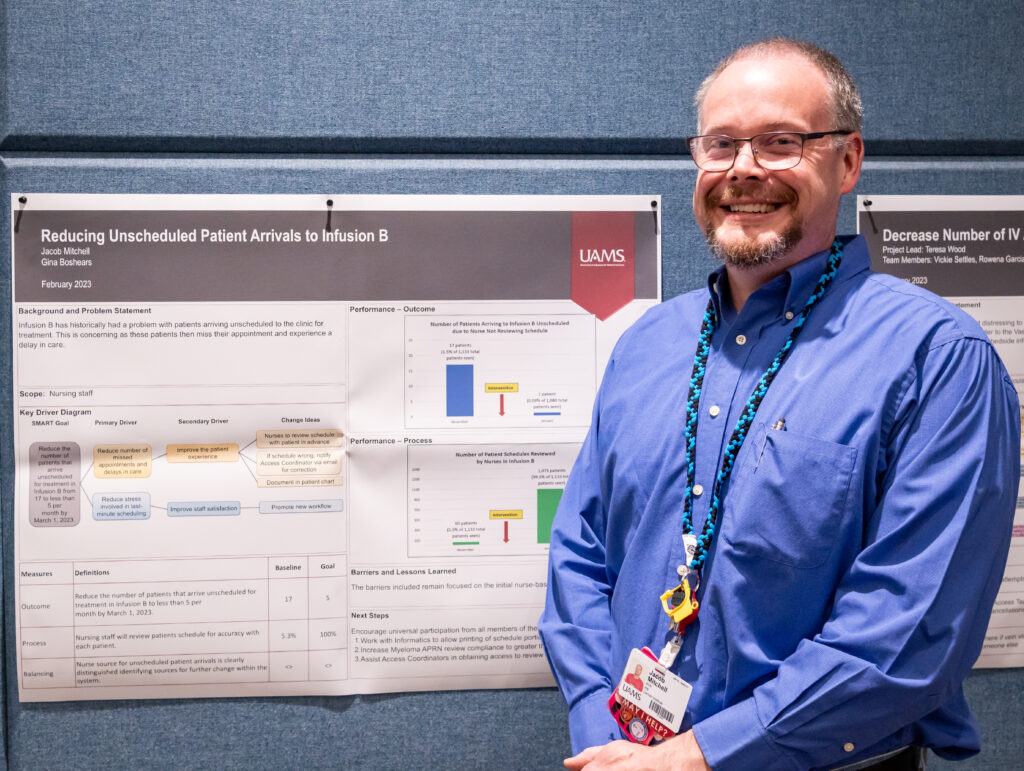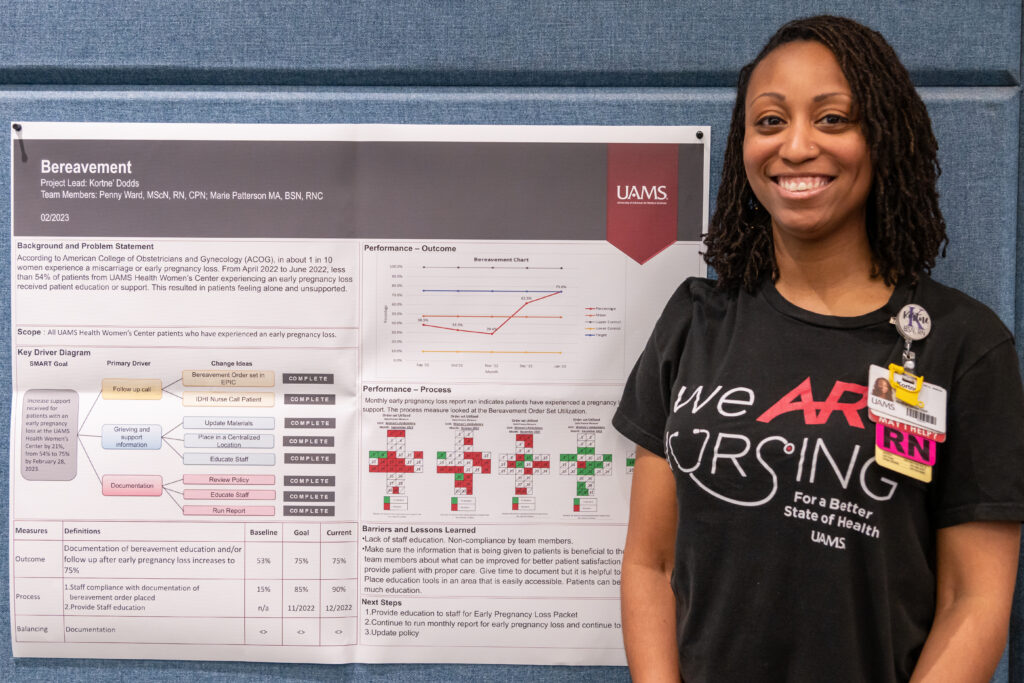The UAMS Resource Nurse Program was implemented in 2008 with the express purpose of improving patient outcomes through the engagement of clinical nurses in quality improvement projects. This program started with a focus on infection prevention, skin care, pain, safety, and diabetes for inpatient nurses for 6-month terms. Over the course of 15 years, the program has grown into a robust course of quality training and initiatives for both inpatient and ambulatory nurses, working on quality improvement projects that align with the UAMS Vision 2029 strategic goals. Resource nurses who successfully complete the program requirements receive a financial stipend and the end of the term.
Last spring, nurses from inpatient and ambulatory areas submitted a letter of interest with peer evaluation and nurse leader support statements to engage in the FY23 Resource RN program. The term began in July and started with completing Leading Quality Improvement (LQI) training on FOCUS PDSA processes. Resource Nurses met with quality improvement coaches and nursing leaders monthly to design and execute a quality improvement project using the FOCUS PDSA model. The Resource Nurses utilized improvement huddles to bring attention to the project in their areas, educating staff on the problem, goals, and implementations. The Resource Nurses reviewed data, including process and outcome measures, to track the progress of their projects. The FY23 Resource Nurse Program came to a close last month and on March 30th, a graduation for the Resource Nurses was held in celebration of their amazing accomplishments in impacting quality patient care. There were three podium presentations of quality projects and poster presentations of others. Projects included improvement of typical nursing sensitive quality indicators like falls, hospital acquired pressure injuries (HAPI) and hospital acquired infections (HAIs). Other projects worked to improve patient experience, like Jacob Mitchell, BSN, RN, in Infusion B (left), who improved clinic workflow and patient scheduling to reduce the number of patients arriving to Infusion B on an unscheduled day. Kortne Dodds, BSN, RN, Women’s Health Center (right), recognized the need to improve support for patients who had experienced early pregnancy loss. Her project focused on improving bereavement support for these patients.


\
Congratulations to all the FY23 Resource Nurses!
| Resource Nurse | Unit/Area | Project |
| Amy Hale | F9 | Reduce Patient Falls |
| Christina Cooley | PRI 5 | Reduce Patient Falls |
| Melanie Mason | NICU | Reduce CLABSI and HAPI |
| Amber Westpheling | H4 | Reduce CLABSI and HAPI |
| Mary Davidson | F4 | Reduce Falls with Injury |
| Chloe Uhrynowycz | H7 | Reduce Falls with Injury |
| Teresa Wood | Inf B | Decrease Number of IV Attempts for Infusion B Patients |
| Jacob Mitchell | Inf B | Reducing Unscheduled Patient Arrivals to Infusion B |
| Brenda Willett | SUSL | Improving Patient Education to Reduce Readmissions |
| Kristal Watson | Endoscopy | Endoscopy Procedure Room Turnover Time |
| Stephanie Moran | Periop | Missing Neurological Assessment for Preoperative Neuro Surgical Cases |
| Kortne’ Dodds | Women’s Health | Bereavement Support for Patients with Early Pregnancy Loss |
| Angela Ward Chandani Patel Amanda Murry Janet Perry | IMSL Family Medicine Clinics | Improving Timely Foot Exams for Diabetic Patients |
Resource nurses embody excellence by enhancing processes to improve patient outcomes. Interested in engaging in quality improvement for your patients as a Resource RN? The FY24 Resource Nurse Program will start in July and the selection period will begin soon. Talk with your nursing leadership if you are interested in serving as a Resource Nurse next term.
